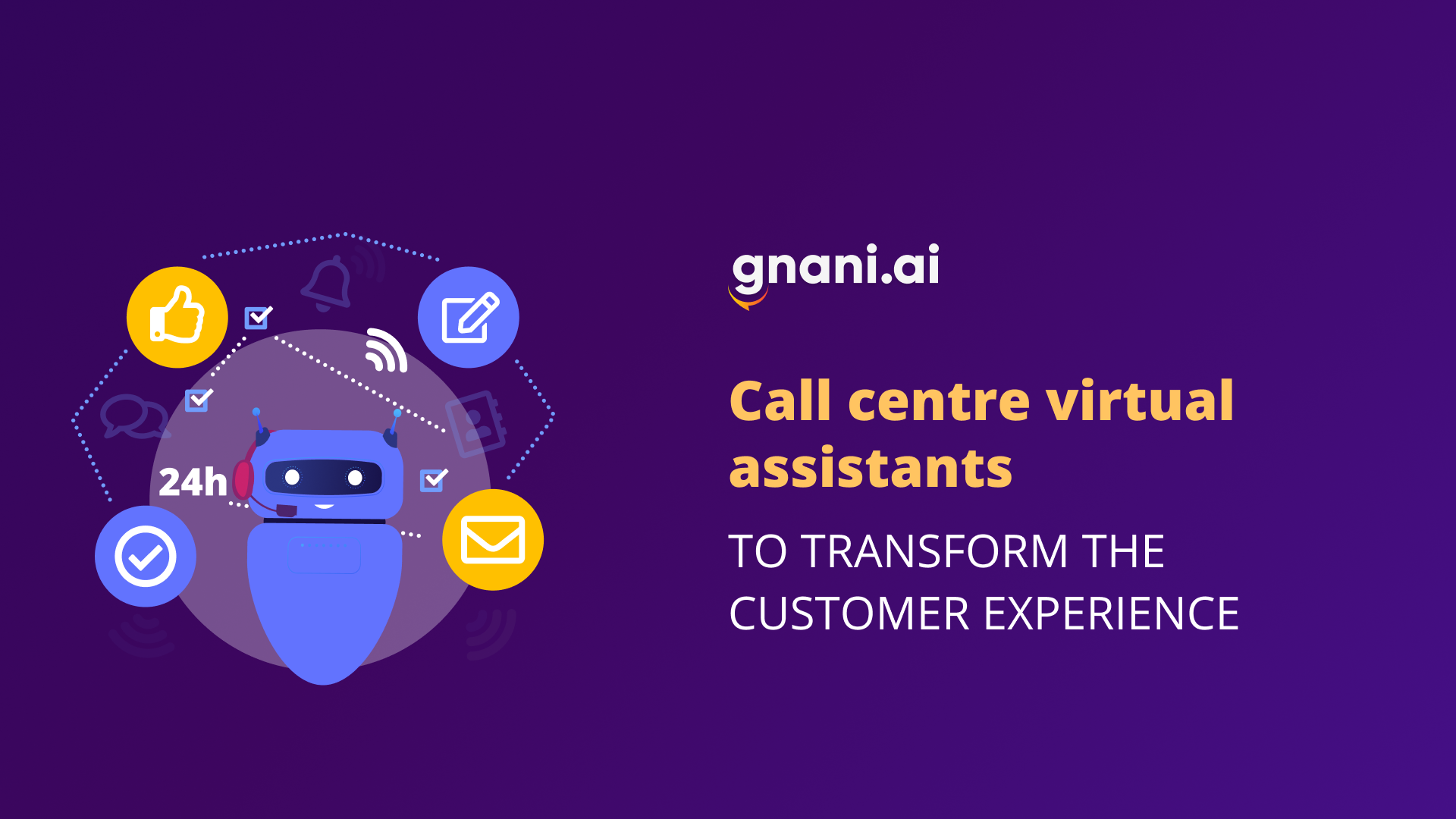Customer service is the new frontier of competition in the post-COVID world. Over half the consumers want better customer service with more innovative engagement. Close to 60% of consumers are ready to stop using a brand due to poor customer service.
As a global digital transformation is underway, more companies are looking at contact center AI as an avenue of CX investment. Using virtual assistants in contact centers can help reduce frustrating problems like long call waiting times, blocked calls, call drops while being more affordable than other ways to scale up capacity.
Also called conversational AI agents or voicebots, the technology reimagines the way customer service executives address day-to-day work.
How Virtual Assistants Augment Call Center functioning
Virtual assistants are an example of how artificial intelligence is transforming contact centers. 44% of people still prefer voice/phone calls to get their problems resolved, making it an indispensable channel to maintain contact with users. This also means that a growing business incurs a high cost in staffing and maintaining contact center infrastructure.
Traditionally, businesses used IVR systems to deal with high call volumes and resolve simple, manual inquiries. However, 34% of customers see IVR as the most frustrating part of their attempts to reach customer care executives. For a user, waiting for the recording to play out is boring and a waste of urgent time. Voice bots can provide a more engaging and faster experience, especially to agitated users.
Conversational AI assistants mimic humans speaking naturally; thanks to the advanced NLP and NLU systems. The voice bots are easier to use than chat agents since speaking comes more intuitively and they can process various accents, dialects while recognizing the users’ sentiments.
They can be deployed to reduce the burden of repetitive, easily answerable queries like product information, registering complaints or informing about the status of transactions, etc. Virtual assistants can easily provide 24/7 agent availability without necessitating uncomfortable shifts for too many human employees.
Call Monitoring
Using virtual assistants can also make call monitoring more efficient. It is currently done by human trainers and analysts, and while there are contexts only they can glean, there is also an element of bias.
The removal of this bias requires calibration and various checks. Using AI call monitoring can streamline the process, and dispense with simpler parts of it, like categorization.
Modern consumers interact with brands on many channels so the use of omnichannel analytics tools is becoming popular. These tools integrate well with virtual assistants which can glean insights from sentiment analysis and transcription.
Another application of AI assistants in the contact center is robotic process automation. Many repetitive tasks that are too dull for daily decision-making can be set to occur with timely triggers. Voicebots can carry out RPA processes like sending follow-up mails, triggering reminder calls, sending survey and feedback forms, etc.
This frees up human agents to focus on the core dictate of finding better ways to resolve complex customer issues. Voicebots get better with training and learning from larger datasets over time.
Choose From a Variety of Virtual Assistants
Many contact center AI companies are developing virtual assistants to meet the different requirements that come up at various customer journey touchpoints. AI-powered conversational assistants can be used to automate the entire customer service workflow, both for inbound and outbound tasks.
For instance, if a large portion of your callers asks simple, mundane questions, you can delegate these to an FAQ bot, and improve agent availability by 50%.
Another application could be to reduce operational costs by delegating the scheduling of appointments to an appointment booking voicebot. It can sync with Google Calendar, WhatsApp, etc., and integrate with your CRM software. Similarly, you can use claims processing bots and payment reminder bots.
By the end of 2022, 70% of customer interactions are likely to be handled via emerging technologies, and you’ll want to be one among the businesses reaping the advantages of superior CX.





